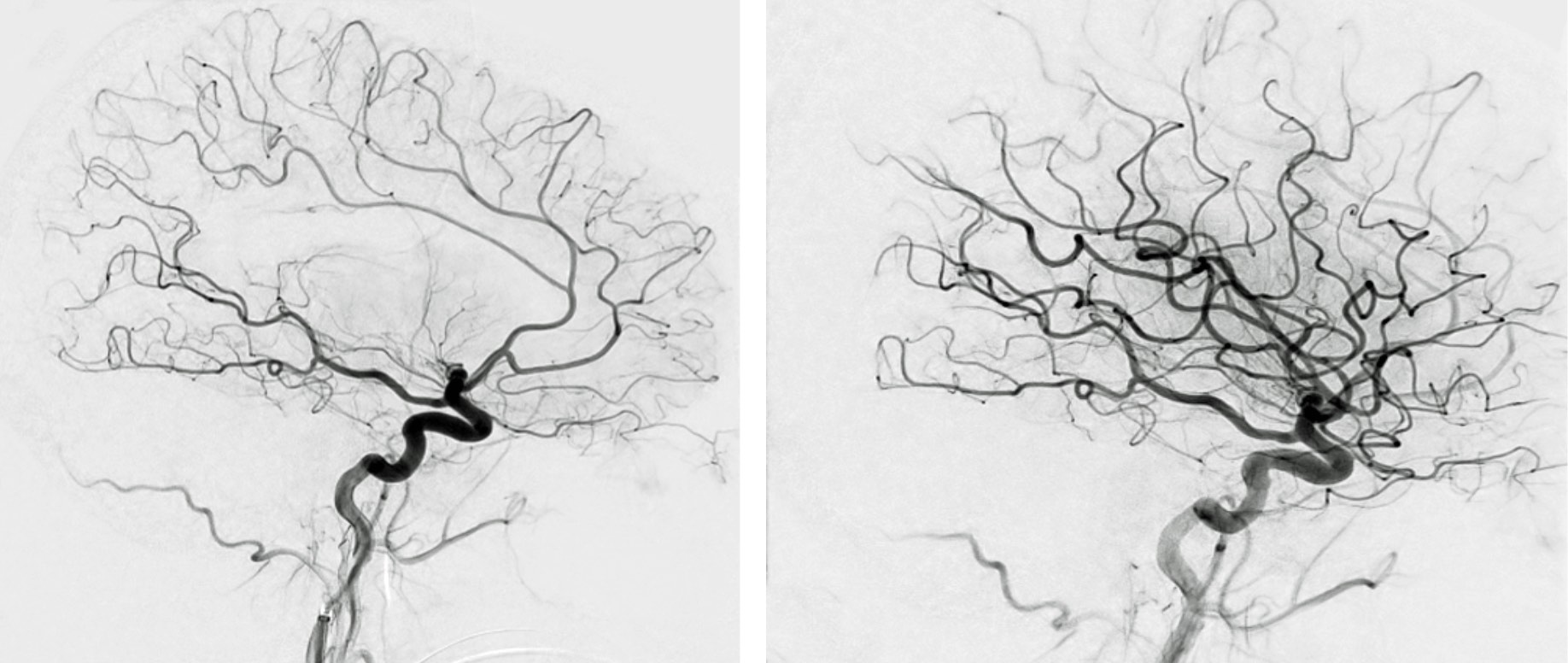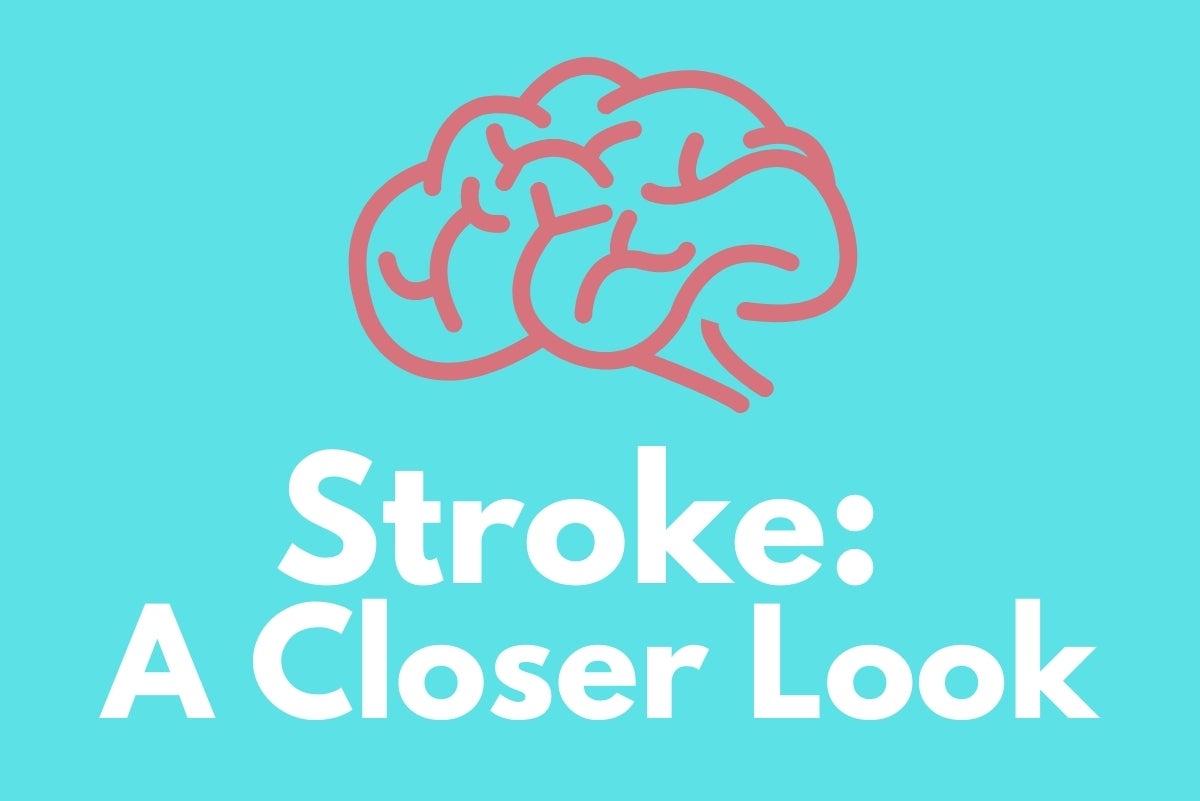Stroke is the nation’s number one cause of disability in adults and one of our country’s leading causes of death.
May is National Stroke Awareness Month. Stroke is the nation’s number one cause of disability in adults and one of our country’s leading causes of death. But most strokes are actually preventable. In today’s blog, St. Mary’s Stroke Center Coordinator Whitney Barfield, RN, takes us on a deep dive into what stroke is and what St. Mary’s can do to help people who experience stroke.
What happens during a stroke?
In a stroke, blood flow to part of your brain is reduced. Blood brings oxygen and vital nutrients to brain cells and carries away waste products such as carbon dioxide. When blood flow is interrupted, brain cells in the affected area are immediately under stress, stop functioning, and start dying. If blood flow is not restored quickly, all the cells that can't get enough blood flow from other, unaffected blood vessels will die, and the functions they control will be lost.
What causes a stroke?
Strokes are caused by two things:
Blood clots
About 85 percent of strokes happen when a blood clot blocks a blood vessel. This is the same thing that causes most heart attacks. High blood pressure, diabetes or other factors damage the inside of a blood vessel in the brain. Cholesterol builds up at the damaged spot.
A blood clot forms, just as it would on a cut on your skin. Eventually, the clot becomes too large and breaks away. The blood carries it to smaller and smaller blood vessels until it gets stuck, blocking blood flow. This type of stroke is called "ischemic." Most ischemic strokes are preventable with lifestyle changes and good management of high blood pressure and diabetes.
Blood vessel tears
In about 15 percent of strokes, a blood vessel breaks. Internal bleeding keeps blood from getting to the brain cells that need it. Most tears are caused by an injury or a genetic problem with the way the blood vessels formed. This type of stroke is called "hemorrhagic."
How can St. Mary's help if someone is having a stroke?
St. Mary's is a leader in stroke care. Our Athens hospital was one of the first 20 Joint Commission-certified primary stroke centers in the United States. Today, we continue to offer leading-edge care, including:
Mechanical thrombectomy
This high-tech procedure is used to physically remove blood clots from major blood vessels serving the brain. It is performed by Dr. Neil Woodall of Georgia Neurological Surgery & Comprehensive Spine and can restore blood flow to save brain cells that would otherwise die. It can save lives and reduce disability. It is available at St. Mary's Hospital in Athens anytime Dr. Woodall is available.
Clot-busting medication
St. Mary's has the technology to find out fast if a stroke is being caused by a blood clot. If it is, our Emergency Department doctors can give the patient a drug that may dissolve the clot to restore blood flow. This treatment is available at our hospitals in Lavonia and Greensboro as well as Athens.
Why is it so important to get care fast?
As noted above, every minute a stroke goes on, up to 1.9 million brain cells die. Millions more cells are stressed and stop functioning but can be saved with fast treatment. Once brain cells die, they can't be brought back. Any function they control – from storing memories to moving your leg – will be lost. The sooner we can start treatment, the more brain cells we can save. And the more brain cells we can save, the more functions you'll be able to save or relearn.
But you can't save all the affected brain cells. Is there anything you can do to fix the damage?
The brain is good at learning. So, parts of the brain that weren't damaged by the stroke often can be taught to do the things that the lost brain cells used to do. This is the goal of rehabilitation.
Our physical therapists, occupational therapist and speech-language pathologists (PT, OT and SLP) help stroke patients relearn how to walk, use their hands, talk, and swallow so that they can go back to doing the things they love. It's rare that we can restore 100 percent of functions lost to a stroke – prevention is always best! – but we can often restore enough function that patients are able to enjoy life again.
-
Neurohospitalists. Stroke care at St. Mary's is directed by specially trained physicians who specialize in providing care to patients with brain and other nerve conditions in the hospital.
-
Outpatient neurologists. St. Mary's Neurological Associates provides in-office preventive care and follow-up care to stroke survivors and other patients with neurological conditions. 2470 Daniells Bridge Road, Bldg. 200, Suite 261, Athens.
-
Neuroscience Critical Care Unit. St. Mary's provides a medically directed critical care unit dedicated to patients with life-threatening neurological conditions or who are recovering from major brain or spine surgery.
-
Neuroscience Nursing Unit. This unit provides routine, physician-directed inpatient nursing care with St. Mary's full continuum of services, including rehabilitation, respiratory care, social work/case management, palliative care and spiritual care.
-
Center for Rehabilitative Medicine. St. Mary's CRM provides intensive PT, OT and SLP services along with 24/7 nursing care with the goal of helping patients return to active living in the community.
-
Home health care/palliative care/hospice care. Provides nursing, rehabilitation, home health aides and more to help patients recover at home and reduce the need for hospital-based care.
-
Outpatient care. From diagnostics such as CT scans to rehabilitative services and lifelong wellness, St. Mary's Outpatient Diagnostic, Rehab and Wellness Center is your "one-stop shop" for outpatient care. 2470 Daniells Bridge Road, Bldg. 300, Athens.
Stroke: Before and After

These images show blood vessels in the brain (black squiggles). At left, a blood clot is keeping blood from flowing to a large area at the center of the patient’s brain. At right, mechanical thrombectomy has restored blood flow to the areas affected by the stroke.




